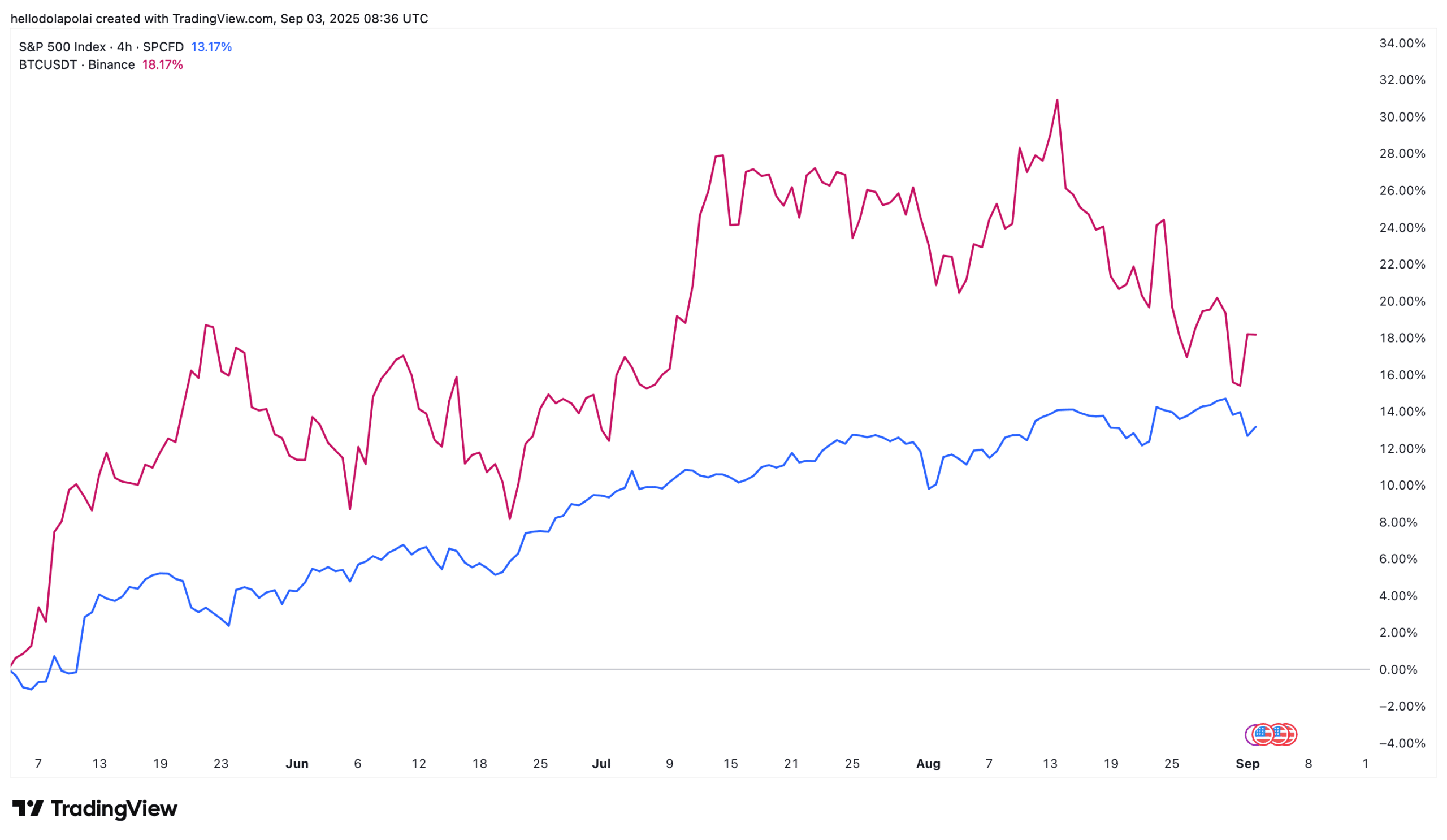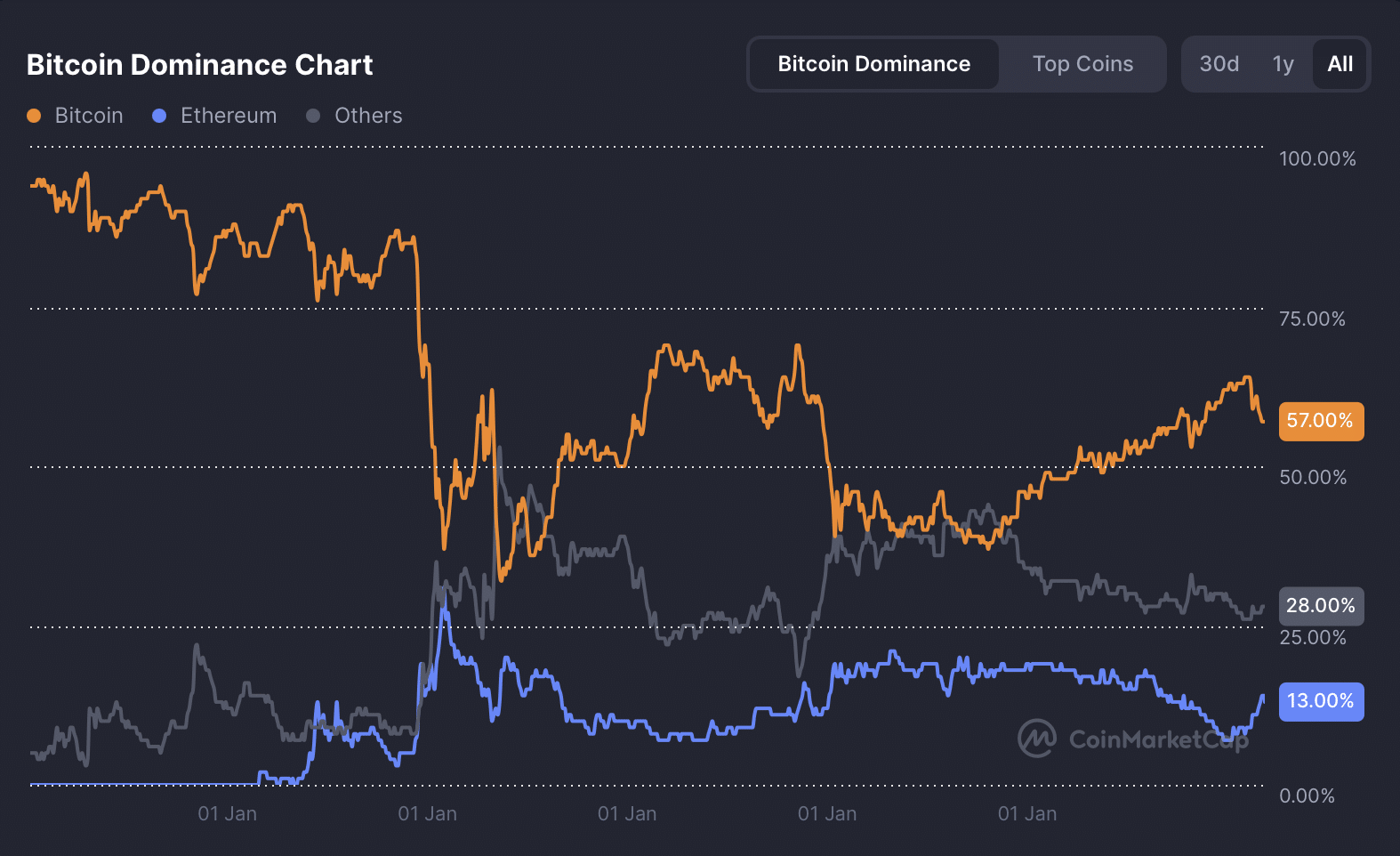Bitcoin’s decoupling from the S&P 500 accelerated as BTC rallied while equities slipped, signaling capital rotation into crypto. This Bitcoin decoupling from the S&P 500 could lift altcoins and reduce BTC dominance temporarily, with analysts warning volatility may increase as BTC tests key resistance levels.
-
Bitcoin outperformed the S&P 500 on recent 1-day charts, indicating capital rotation into crypto.
-
BTC dominance (BTC.D) fell ~3.43% while Ethereum and selected altcoins captured inflows.
-
Analysts expect short-term altcoin strength but warn BTC dominance may rebound by October, per market commentary.
Bitcoin decoupling from the S&P 500 shows BTC strength; read actionable market signals and trade implications — stay informed with COINOTAG.
What is Bitcoin decoupling from the S&P 500?
Bitcoin decoupling from the S&P 500 is when BTC’s price action diverges from U.S. equities, often reflecting capital rotation or unique crypto catalysts. Recent 1-day charts show BTC rising while the S&P 500 falls, signaling a renewed inflow into crypto markets and potential altcoin strength.
How has the recent market move unfolded?
On the latest daily chart, Bitcoin rallied (purple), while the S&P 500 trended lower, indicating a clear divergence. This pattern suggests investors shifted capital from equities into cryptocurrencies over the session.
Bitcoin had retraced from highs near $124,000 to a low around $108,000 before attempting a breakout above the $110,000 resistance zone. The move represents a rebound in demand after recent weakness.


Source: TradingView
Why does this decoupling matter?
Decoupling signals a shift in investor preference and liquidity. When Bitcoin rallies independently of equities, it can indicate risk-on flows specific to crypto, improved on-chain metrics or crypto-native catalysts that do not affect equities.
How did historical performance compare?
Historical analysis shows the S&P 500 outperformed Bitcoin only sporadically between 2020–2024. Curvo data indicates the S&P beat BTC three times in that span, and during the 2022 drawdown Bitcoin fell ~62% while the S&P fell ~13%.
In 2024, Bitcoin gained 135% versus the S&P 500’s 33%, highlighting periods when crypto significantly outpaced equities.
What does the BTC.D decline imply for altcoins?
Bitcoin Dominance (BTC.D) dropped 3.43% in the last day. When BTC.D falls, capital often flows into altcoins with higher short-term upside.
CoinMarketCap data noted Ethereum captured the largest share of recent inflows, rising ~2.17%. A sustained BTC.D decline would likely extend altcoin gains in the short term.


Source: CoinMarketCap
What analysts are saying
Market commentator Ben Cowen offered a mixed view: bullish on ALT/ETH pairs in the near term but bearish on ALT/BTC pairs if BTC dominance rebounds. He noted that ETH retesting its 21-week EMA could give alts a temporary edge, but momentum may fade once ETH/USD reaches that level.
Standout performers and sector implications
The Altcoin 90-Day Index highlighted memecoins and several mid-cap projects as recent leaders. Tokens like Pudgy Penguins (PENGU), Ethena (ENA), Conflux (CFX), Story (IP), and Chainlink (LINK) sustained upward momentum supported by on-chain activity and fundamentals.
Key Takeaways
- Decoupling confirmed: BTC rallied while the S&P 500 fell, indicating crypto-specific inflows.
- Altcoin opportunity: BTC.D fell ~3.43% and ETH led recent liquidity capture, favoring selected alts.
- Watch levels: Key pivots include BTC resistance near $110,000 and ETH 21-week EMA; traders should monitor volume and BTC.D for trend confirmation.
Frequently Asked Questions
How long can Bitcoin remain decoupled from equities?
Duration varies: decoupling can last days to months depending on macro conditions and crypto-specific catalysts. Monitor on-chain flows, macro liquidity, and BTC.D for indications of reversal or continuation.
Can altcoins outperform during this phase?
Yes. When BTC.D declines, altcoins frequently outperform as capital reallocates, but risk is higher and leadership can rotate quickly between memecoins, mid-caps, and large-cap projects.
What should long-term investors do?
Long-term investors should assess risk tolerance, diversify across high-conviction large-cap tokens, and avoid chasing short-term momentum without confirmed trend support.
Conclusion
Bitcoin decoupling from the S&P 500 highlights a renewed appetite for crypto that can translate into short-term altcoin strength and higher volatility. Market participants should watch BTC resistance near $110,000, BTC.D trends and ETH’s 21-week EMA to gauge the rotation’s sustainability. COINOTAG will continue tracking developments and updating readers.
